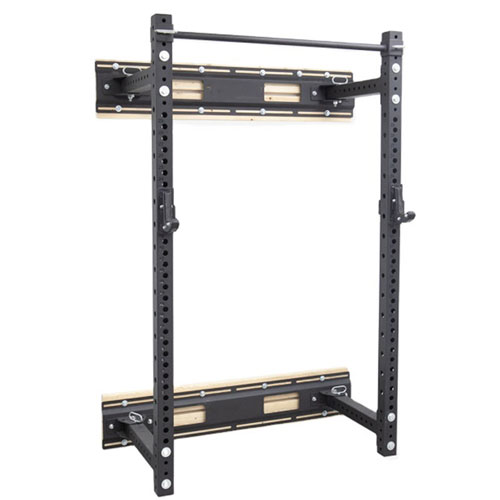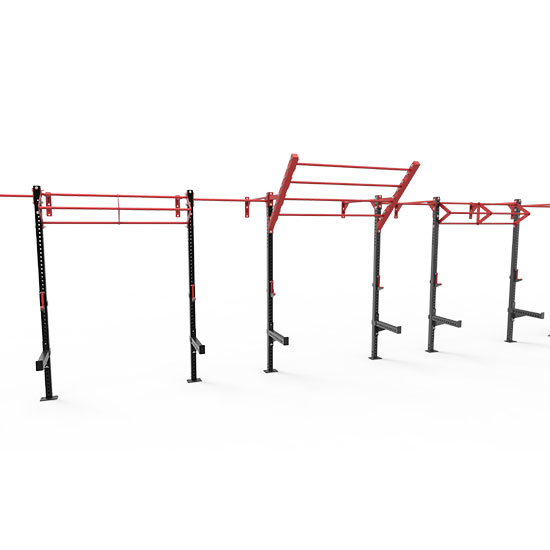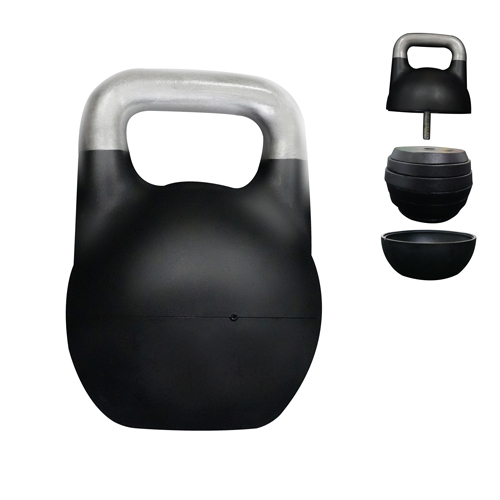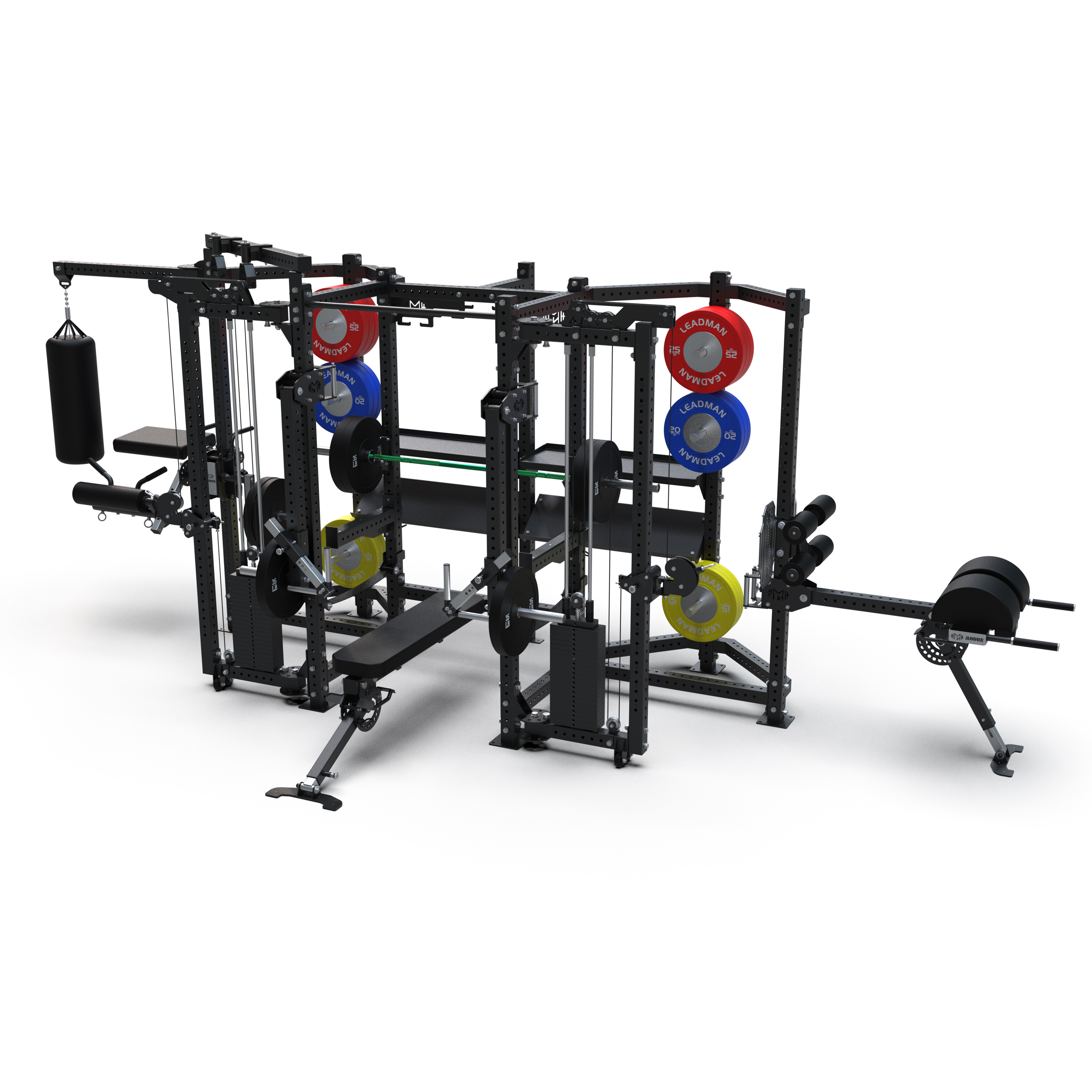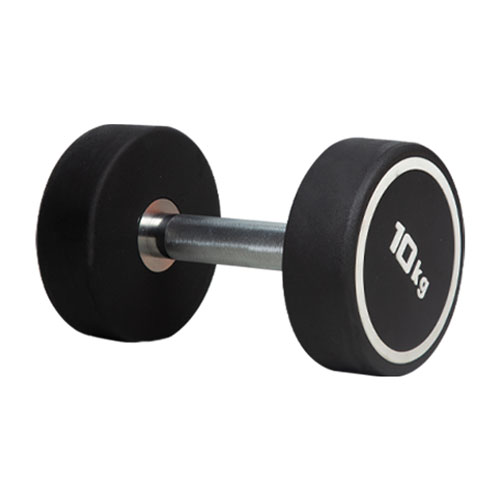Choosing the Right Barbell for Serious Weightlifting
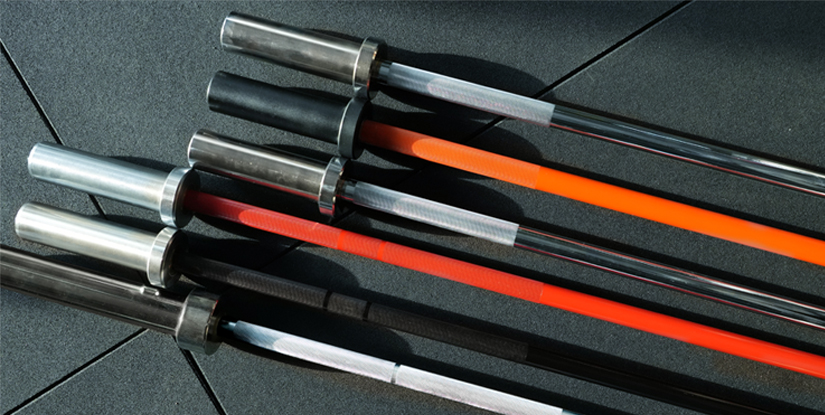
When it comes to serious weightlifting, the barbell is your most important tool. It's the foundation for countless exercises that build strength, muscle, and power. But not all barbells are created equal. Some are better suited for certain types of lifting than others.
If you're serious about strength training, it's important to choose the right lifting tool. The best ones are made from high-quality materials, have a durable construction, and are designed to withstand heavy use. They also have a good knurl pattern and grip, and a smooth bearing system.
In this article, we'll break down the key factors to consider when choosing a barbell. We'll also provide detailed insights into how Leadman Fitness, a leader in fitness equipment manufacturing, ensures the highest quality standards in barbell production.
Material and Construction
The material and construction of a barbell are the most important factors to consider when choosing one. The material will determine the barbell's durability, lifting capacity, and weight. The construction will determine how well the barbell holds up to heavy use.
Materials
The most common materials used to make barbells are steel and stainless steel. Steel is the more affordable option, but it's also more prone to rust. Stainless steel is more expensive, but it's also more resistant to rust and corrosion.
Other materials that are sometimes used to make barbells include aluminum and titanium. Aluminum is lightweight and strong, but it's also more expensive than steel. Titanium is the strongest and most durable material used to make barbells, but it's also the most expensive.
Construction
The construction of a training bar refers to how it is made. The bars can be made from a single piece of metal, or they can be made from multiple pieces that are welded together.
One-piece barbells are the strongest and most durable, but they are also the most expensive. Welded barbells are less expensive, but they are not as strong or durable as one-piece barbells.
Weight and Dimensions
The weight and dimensions of a barbell will determine how it feels to lift. A heavier barbell will be more challenging to lift, but it will also provide more resistance for your muscles. A lighter barbell will be easier to lift, but it will not provide as much resistance.
The dimensions of a barbell refer to its length and diameter. The length of a barbell will determine how many weight plates you can load onto it. The diameter of a barbell will determine how well it fits in your hands.
Knurl Pattern and Grip
The knurl pattern and grip of a barbell are important factors to consider if you're planning on doing a lot of heavy lifting. The knurl pattern is the texture on the surface of the barbell. The grip is the material that covers the knurl pattern.
A good knurl pattern will provide you with a secure grip on the barbell, even when your hands are sweaty. A good grip will help to prevent the barbell from slipping out of your hands.
There are a variety of different knurl patterns and grips available. Some people prefer a more aggressive knurl pattern, while others prefer a more smooth knurl pattern. The best way to find out what you prefer is to try out different barbells.
Bearing System
The bearing system of a barbell is what allows the barbell to rotate smoothly. A good bearing system will make it easier to lift the barbell and will also reduce the wear and tear on the barbell.
There are two main types of bearing systems: ball bearings and needle bearings. Ball bearings are the most common type of bearing system found on barbells. They are relatively inexpensive and easy to maintain. Needle bearings are more expensive than ball bearings, but they are also more durable and long-lasting.
Durability and Tensile Strength
The longevity and tensile strength of a barbell are important factors to consider if you're planning on using it for heavy lifting. The ability to withstand heavy useof a barbell refers to how well it can withstand heavy use. The tensile muscle mass of a barbell refers to how much weight it can hold before it breaks.
A durable barbell will be able to withstand years of heavy use without breaking or bending. A barbell with a high tensile strength will be able to hold a lot of weight without breaking.
Warranty and Support
The warranty and support offered by the manufacturer of a barbell are important factors to consider if you're planning on buying a barbell. A good warranty will protect you from defects in the barbell. A good support team will be able to answer your questions and help you with any problems you may have with the barbell.
Cost and Value
The cost of a barbell is an important factor to consider, but it shouldn't be the only factor. It's important to find a barbell that fits your needs and budget.
The value of a barbell is determined by its quality, ability to withstand heavy use, and features. A good barbell will be made from high-quality materials, have a durable construction, and have a good knurl pattern and grip.
Why Choose Leadman Fitness?
When it comes to barbells and fitness equipment, Leadman Fitness stands out as a trusted and innovative manufacturer. Here’s why Leadman Fitness should be your go-to choice:
1. Vertical Integration for Superior Quality and Affordability
Leadman Fitness operates four specialized factories: Rubber-Made Products Factory, Barbell Factory, Casting Iron Factory, and Fitness Equipment Factory. This vertical integration ensures consistent quality and significantly reduces production costs, allowing us to offer premium barbells at competitive prices.
2. Strong R&D Capabilities
With a dedicated team of 16 professional designers, Leadman Fitness boasts a robust R&D department capable of delivering customized product designs and performance optimizations. This innovation-driven approach keeps us at the forefront of the industry.
3. Customization Services
Leadman Fitness provides OEM and ODM services, tailoring fitness equipment to meet specific customer requirements. This flexibility not only satisfies diverse customer needs but also helps clients build unique brand identities in the market.
4. Rigorous Quality Control
Leadman Fitness has established its own quality testing laboratory to ensure that every product meets international standards. This unwavering commitment to quality has earned the trust of customers worldwide.
5. Sustainability and Innovation
Leadman Fitness is dedicated to reducing its environmental impact by using eco-friendly materials and energy-saving technologies. We also invest in smart fitness equipment, integrating AI and VR technologies to meet the growing demand for personalized fitness solutions.
Conclusion
Choosing the right liftingtool is important for serious weightlifters. The best barbells are made from high-quality materials, have a durable construction, and are designed to withstand heavy use. They also have a good knurl pattern and grip, and a smooth bearing system.
When choosing a barbell, it's important to consider the following factors: material and construction, weight and dimensions, knurl pattern and grip, bearing system, durability and tensile strength, warranty and support, cost and value, and available accessories.
By considering all of these factors, you can choose the right barbell for your needs and budget. And with Leadman Fitness, you can trust that you're getting a product that combines quality, innovation, and affordability.
FAQ About Barbells
1. What is the best material for a barbell?
The best material for a barbell depends on your specific needs. Carbon steel is the most common and offers a good balance of strength and affordability. Alloy steel is stronger and more durable, making it ideal for heavy lifting. Stainless steel is highly resistant to corrosion, making it perfect for harsh environments.
2. How do I choose the right barbell length?
The right barbell length depends on your height and the type of exercises you plan to perform. Standard barbells are typically 7 feet long, but shorter options are available for those with limited space or specific training needs.
3. What is knurling, and why is it important?
Knurling refers to the textured pattern on the barbell's grip area. It provides better grip and prevents the barbell from slipping during lifts. Different knurling patterns are available, with more aggressive patterns offering better grip but potentially causing discomfort over time.
4. How do I maintain my barbell?
Regular maintenance is essential to prolong the life of your barbell. Clean it regularly to remove dirt and sweat, and apply a light coat of oil to prevent rust. Store it in a dry place and avoid dropping it on hard surfaces to prevent damage.
5. What is the difference between an Olympic barbell and a standard barbell?
Olympic barbells are designed for competitive resistance training and are built to higher standards. They are typically longer, have a larger diameter, and can hold more weight. Standard barbells are more common in home gyms and are generally less expensive.

